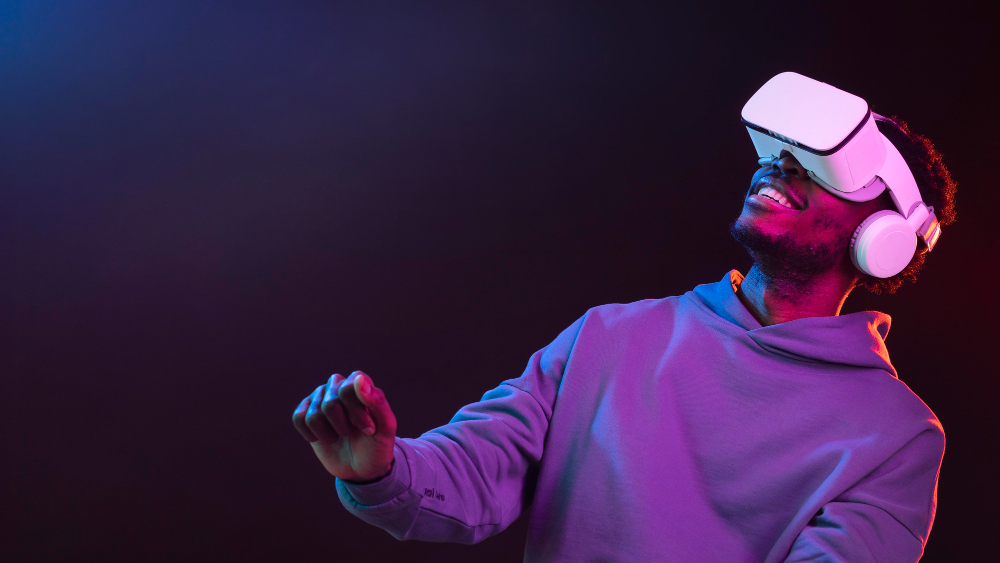Virtual Reality (VR) has moved beyond being a futuristic concept to becoming a mainstream technology. From immersive gaming and workplace training to healthcare and education, VR is transforming how we interact with digital environments. However, like any emerging technology, VR faces its own set of hurdles. Two of the biggest challenges that developers and designers must overcome are motion sickness and accessibility.
In this article, we’ll break down why these issues exist, how they impact users, and what strategies the industry is exploring to make VR more inclusive and comfortable for everyone.
Why Motion Sickness Happens in VR
Motion sickness in VR—often called VR sickness—occurs when there’s a mismatch between what your eyes see and what your body feels.
- Visual vs. Physical Movement: In VR, your eyes may see movement (walking, running, flying), but your body remains still. This sensory conflict confuses the brain and causes nausea, dizziness, or discomfort.
- Latency Issues: If the system delays between your real movement and what happens in VR, even by milliseconds, it can trigger sickness.
- Low Frame Rates: VR requires very high refresh rates (90Hz or more). Anything lower makes movements appear choppy, increasing discomfort.
- Field of View (FOV): Too wide or too narrow an FOV can make users feel disoriented.
This problem affects a significant percentage of users, limiting how long or how often they can use VR.
The Impact of Motion Sickness on VR Adoption
Motion sickness is not just a minor inconvenience—it’s a major barrier for wider VR adoption.
- Casual Users Quit Early: First-time users often feel sick and avoid VR afterward.
- Shorter Play or Training Sessions: Companies relying on VR for training face reduced productivity when employees can’t stay in VR for long.
- Negative Public Perception: Stories about nausea discourage potential users from even trying VR.
If not addressed, this could slow VR’s growth in gaming, education, and business sectors.
How Developers Are Tackling Motion Sickness
Developers and hardware makers are working on multiple solutions:
- Higher Refresh Rates and Lower Latency
Modern headsets like the Meta Quest 3 and PlayStation VR2 focus heavily on reducing latency and offering smoother frame rates. - Improved Locomotion Systems
- Teleportation Movement: Users “jump” from point to point instead of walking, reducing disorientation.
- Arm-Swing Locomotion: Mimics natural walking by swinging arms.
- Redirected Walking: Subtly shifts the VR world so players can walk more naturally in smaller spaces.
- Comfort Settings
Many VR games offer “comfort mode,” narrowing FOV during fast movements or offering seated play to ease discomfort. - Hardware Innovations
Wider lenses, better sensors, and inside-out tracking make movements smoother and more natural.
Accessibility in VR: The Next Big Challenge
Beyond motion sickness, accessibility is another crucial issue. For VR to succeed globally, it must work for people of different abilities and circumstances.
1. Physical Accessibility
- Mobility Limitations: Many VR games assume users can stand, walk, or move arms freely. For wheelchair users, this creates a barrier.
- Controller Design: Standard VR controllers may not be suitable for those with limited hand dexterity.
2. Visual Accessibility
- Colorblindness: VR environments often lack color-blind-friendly design.
- Low Vision or Blindness: VR heavily relies on visuals, leaving visually impaired users behind unless alternatives are created.
3. Hearing Accessibility
- Many VR games and apps lack subtitles or visual cues, excluding those with hearing impairments.
4. Financial Accessibility
- High-end VR headsets and PCs are expensive. Even with cheaper standalone devices, the cost remains a barrier for many potential users.
Strategies for Improving Accessibility in VR
Developers and industry leaders are beginning to adopt solutions:
- Customizable Controls
Allowing remappable buttons, gesture alternatives, and voice commands helps more people use VR comfortably. - Seated & Standing Options
Designing VR games that work equally well seated or standing ensures inclusivity for mobility-impaired users. - Subtitles and Visual Cues
Adding in-game captions, haptic feedback, and visual indicators makes experiences accessible to hearing-impaired users. - Colorblind-Friendly Design
Incorporating patterns, textures, or alternative signals beyond color helps avoid exclusion. - Affordable Hardware Solutions
Companies are experimenting with lightweight, budget-friendly VR devices to expand adoption worldwide.
The Balance Between Immersion and Comfort
One of the biggest design dilemmas in VR is balancing immersion with comfort. For example:
- Walking naturally in VR is immersive but often causes motion sickness.
- Sitting or teleporting avoids sickness but breaks immersion.
Developers must carefully decide which trade-offs to make, depending on whether they’re creating an entertainment game, a training simulator, or a social platform.
Real-World Examples of Accessibility in VR
- Microsoft’s Adaptive Accessories: Although not VR-specific, they inspire possibilities for modular VR controllers.
- VRChat: Offers seated play options, subtitles, and community-driven accessibility features.
- Tilt Brush Mods: Some community mods adapt drawing apps for people with limited mobility.
These examples show how inclusive design can improve experiences for a wider audience.
Why Accessibility Matters for the Future of VR
Ignoring accessibility doesn’t just exclude users—it also limits the industry’s growth.
- Bigger Audience: Millions of potential users with disabilities represent a huge untapped market.
- Better Public Image: Companies that prioritize inclusivity gain goodwill and loyalty.
- Regulatory Compliance: As VR expands into workplaces and education, accessibility standards may become legal requirements.
Ultimately, inclusivity isn’t just a moral responsibility—it’s a business necessity.
Final Thoughts
VR has incredible potential to transform entertainment, education, and work. But motion sickness and accessibility remain two of the biggest challenges preventing it from reaching its full audience.
The good news is that developers, researchers, and hardware makers are actively addressing these problems. From smoother hardware performance to customizable controls and inclusive design principles, the future looks promising.
For readers who want to stay updated on VR trends, challenges, and solutions, platforms like Know How Blogs offer valuable insights to help navigate this evolving industry.


